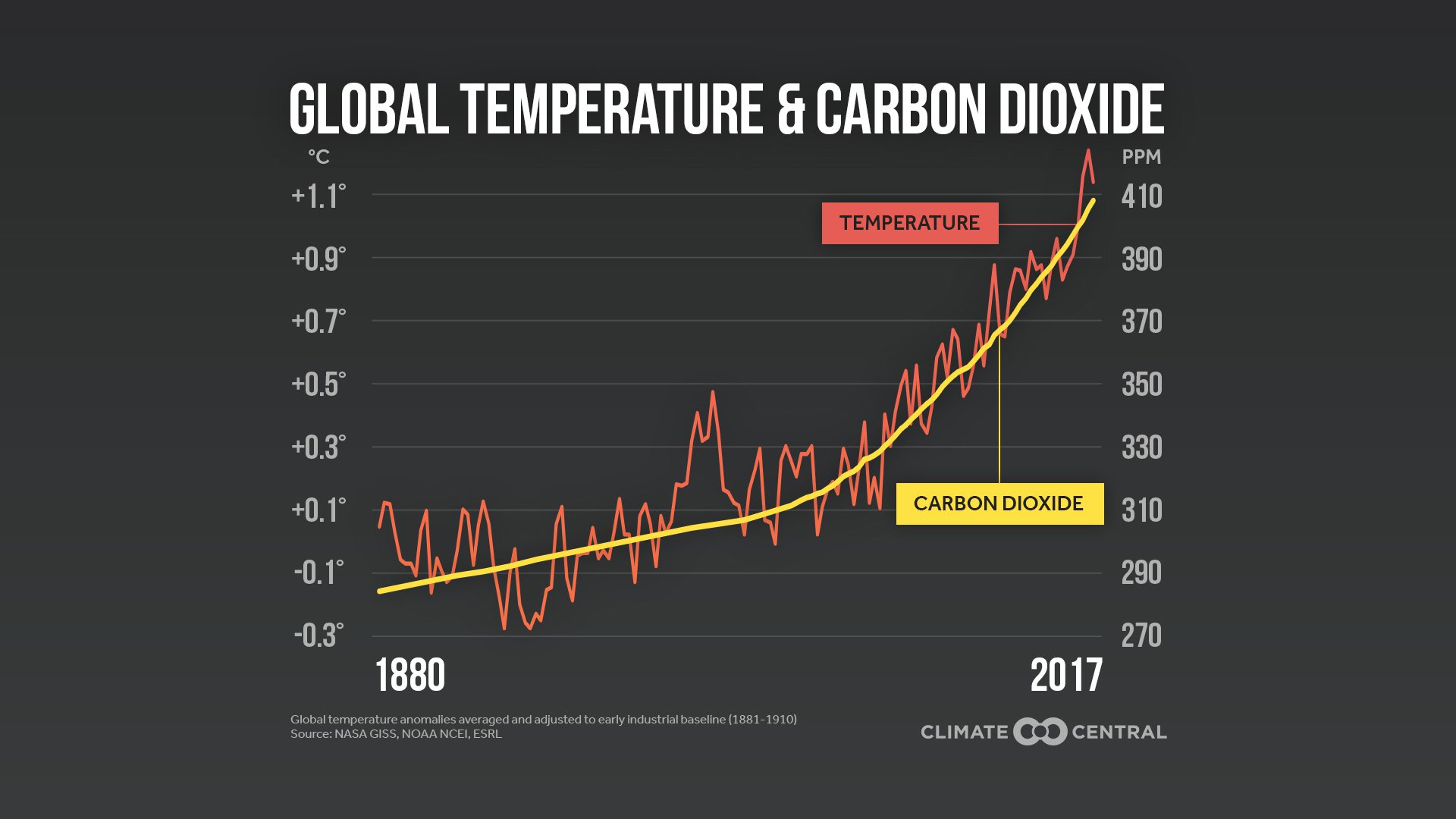What Is Causing Global Warming?
Carbon dioxide and certain other gases in the atmosphere trap heat that radiates from Earth. The more of these gases there are in the atmosphere, the more heat is trapped.
Since the Industrial Revolution of the late 1800s, human activities—such as burning fossil fuels (oil, gas, coal) to generate energy and burning forests to clear land—have produced ever-higher quantities of carbon dioxide emissions. This has dramatically increased the concentration of carbon dioxide in the atmosphere. As carbon dioxide concentrations have increased, so, too, has the average global temperature.
Enlarging an Image
You may click on any image in this lesson to view the full-size version in a new tab. Close the new tab to return to the lesson.
Analyze the following graph, which plots changes in global temperature and carbon dioxide concentrations from 1880–2017. Then use Arrange It to predict how warming temperatures affect different parts of Earth’s systems.
This graph shows how the average global temperature (left axis, red line) and carbon dioxide concentration in the atmosphere (right axis, yellow line) have changed since 1880. Temperature is reported as “temperature anomaly,” which is the number of degrees Celsius above the average for the period from 1951–1980. In 2017, temperatures around the world were, on average, just over 1.1°C (or about 2°F) warmer than they used to be.
